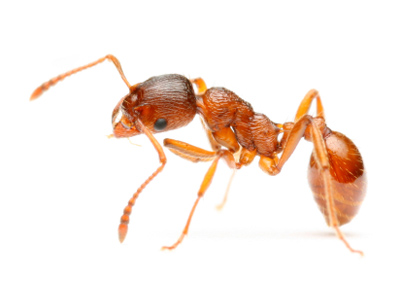Overview
Ants become nuisance when they invade buildings or causes economic loses. Its presence can be undesirable in places meant to be sterile. In homes, they raid stored food and damage indoor structures. Some species, e.g. fire ants which forms mounds in open grass around homes can inflict painful bites and cause allergic reactions in some people.
A number of ant species are commonly found infesting homes and other manmade structures. Some of them have different food preferences and even within the same species, food preference may vary according to the needs of the colony. The colony may consist of drones, queens, workers and soldiers. The eggs, larvae and pupae are usually found in hidden nests. Ant control can sometimes be challenging when nests are located in non-accessible areas and the problem of ‘budding’ occurs.
A number of methods, both chemical and physical are available in the management of ants. Management is based on the species and method of treatment can vary according to the location and circumstances. Chemical treatments involve use of residual and aerosol sprays, dust application and baits in granule and gel formulations. Use of gel baits is recommended in sensitive environment such as food preparation and storage areas and health care facilities. Residual application of liquid insecticides is normally carried out at external areas, surrounding buildings and is executed as a barrier treatment.
Services

